Fastest Quantum resistant blockchain platform
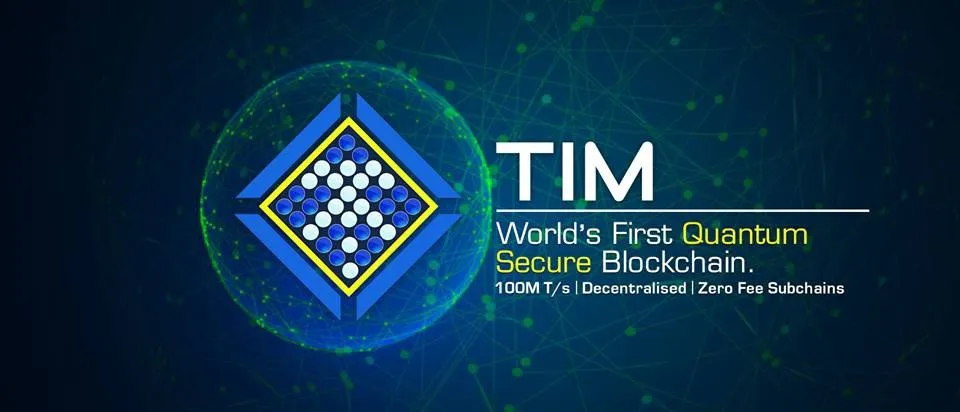
'What is needed is a high performance system which is future ready. Everything from the bandwidth up to the cryptographic nature of the blockchain has to be future proof from the current edges of science. This is to also ensure that the irreversibility of transactions, double spending protection, and ensuring that honest nodes make the majority of network strength. These are key considerations while making this blockchain architecture’ Prahbat Singh (CEO TIM)
Abstract
TIM are creating the next generation of distributed ledger solutions ready to be used in enterprise and businesses. They are trying to develop state of the art blockchain features trying to make a blockchain which is secured, decentralised and open for participation to everyone and extremely scalable up to 100 million transactions per second.
Who are they?
TIM blockchain is the brainstorm of Prahbat Singh (CEO)and is now adminster by TIM Foundation, Singapore. TIM is a product of I-E TECH L.L.C., DE, USA. The majority of the team are from India.
Technology
TIM is a patent-pending GPS and quantum proof Elastic DAG blockchain which is claiming to scale up to 100 mil tp/s!! I know what you’re thinking these claims are absurd and preposterous, along with recent fud that has been surrounding the project I don’t blame you for thinking this could possibly be a scam but lets dive further into this and DYOR.
Two layered blockchain : TIM utilizes a two layer blockchain approach similar to Quarkchain. The first layer is the root layer which stores only the merkle hash of the second layer. This is similar to Quarkchain confirmation layer as it doesn't store any transaction data/blocks, This allows the first layer to be very compact in data usage at approx 4mb.
The second layer is the multigraph layer which stores all the transactions data in form of blocks. These blocks are partitioned using vertical sharding
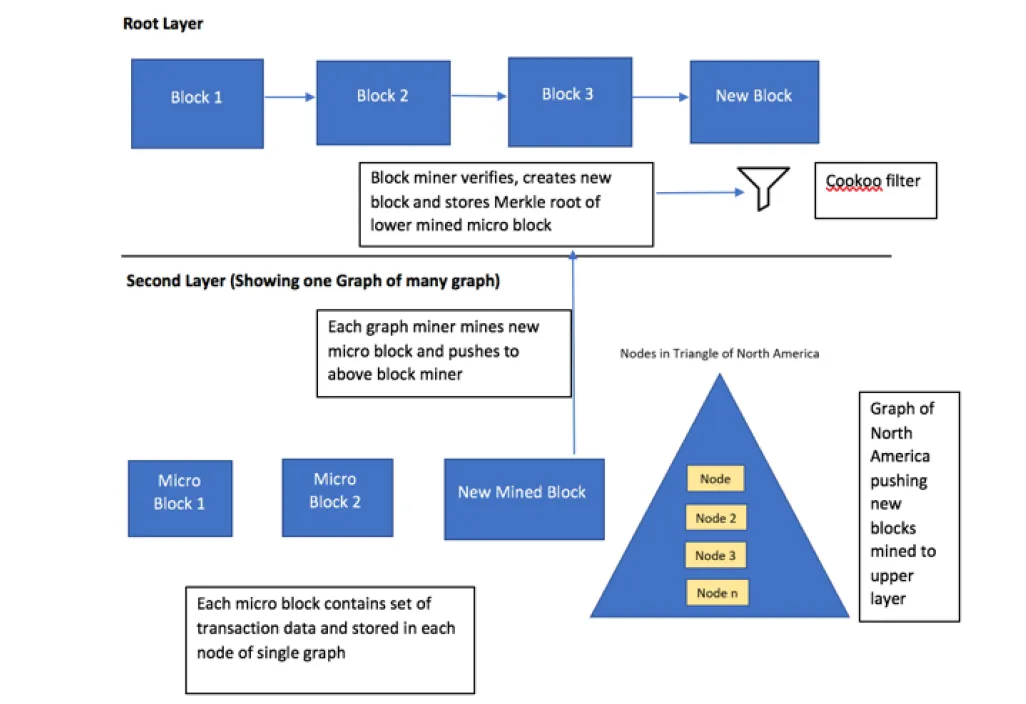
2 layers of TIM blockchain
Vertical sharding : Transaction information is being split based on the locations of the nodes, eg transactions in Europe and america are split and stored on different blocks with all the blocks recording European transactions stored on the Euro nodes and the American transactions stored on the american nodes. This concept is quite popularly being used in today’s centralized database systems but this would be a first for a blockchain.
Geographic Location of nodes: As mention above the geographic location of the nodes play an important part, firstly nodes that are closer together in proximity will obviously have lower latency and faster transactions. TIM first creates cluster of nodes based on geolocation using partition technology. So the nodes which belongs to ASIA will be part of ASIA cluster and nodes which belongs to North America will belong to North America cluster. TIM call this clusters as triangles / graphs.
TIM divides the network of nodes into several triangular regions, data of transactions are only shared within each triangular region. If there is a spike in activity within a region as characteristic of a DAG the area of each triangular region keeps on reducing with demand.
Take for example the scenario where there is 1 GB data on the blockchain within the North America cluster due to a spike in activity within the region. TIM will dynamically changed to many triangles (approx. 100) and data will be partitioned to approx. 10 MB block data. So, each node in a given triangle will have 4 MB of root blockchain and 10 MB of partitioned second layer blocks data. This will enable even a mobile device with less memory to become a node of TIM blockchain.
With a spike in activity within a region the transactions per second also increases as characteristic of a DAG, the area of each triangular region keeps on reducing with demand, creating more and more triangles which in theory boost the bandwidth up to 100,000 tps. Tim blockchain supports up to 10,000 DAGs within its network so therefore at max tps that would be 100 mil tps.
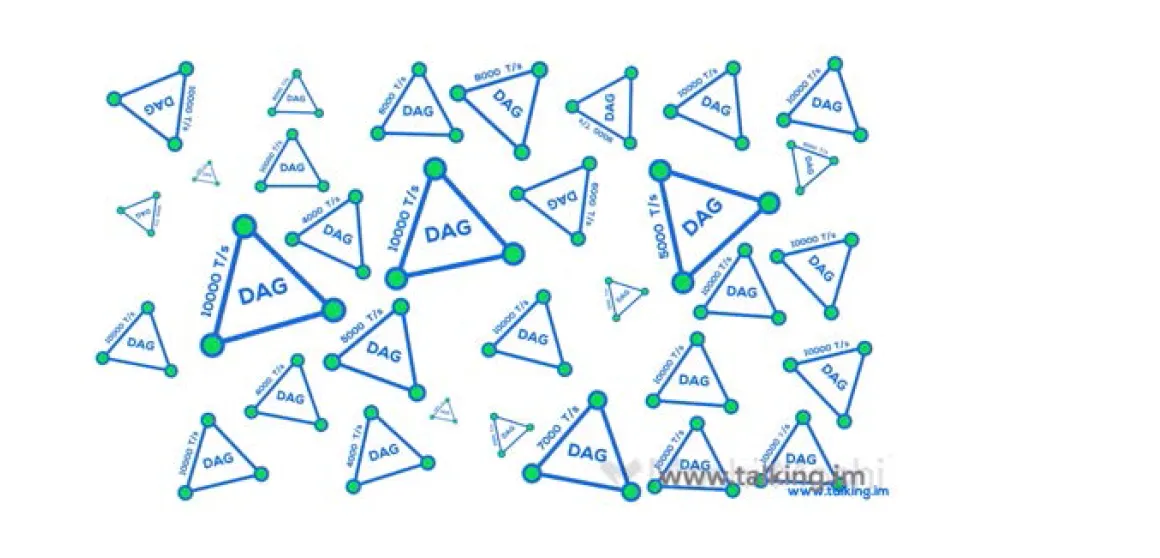
Cluster of nodes (triangles)
Consensus mechanism : Consensus is reached via the Gossip Trust protocol. This works on top of DAG topology to achieve super-fast consensus by using scoring mechanism which makes it possible that it is not required for each node to talk to every other node to form consensus.
Proof of stake : TIM is based on POS (Proof of stake) which enables it to quickly decide if the transaction is valid or not by staking. If a malicious node broadcast a wrong message, it normally will be caught by another graph miner in 2nd/lower layer. If somehow, it bypasses the first checkpoint, it will be caught by the root chain miner. If it somehow still bypasses that then it must bypass the cuckoo filter (details coming soon), and then by challenger node (detials coming up soon again). There are many protection built into this blockchain to prevent such attacks like double spend and Sybil attacks.
Quantum resistance blockchain: For a blockchain to be quantum secure, two types of securities are required:
1)Wallet security, so that your private key could not be derived from public key by quantum attack
2)Quantum attack on blockchain itself. Modify the data structure of blockchain.
The wallet security is achieved by Supersingular elliptic curve isogeny cryptography.
The blockchain security is achieved by the multigraph generated by sharding of TIM network. It acts as the Ramanujan’s graph for generating quantum resistant keys. The key generation works for network size of above 400, therefore has a future readiness feature. The generation mechanism is collaborative, where each of the graph miner computes the isogeny contribution by keeping oneself at the root. The root nature can be easily verified when the block is signed. This also mandates that the block to be created by one of graph miners. To reach this stage, the size of the multigraph is key criteria. It also warrants that the network has equivalent demand to support these many graphs (> 800,000 TPS). Further details of the algorithm will be made available at a later date.
Smart contract : The project initially stem from a fork of Ethereum, hence it uses EVM for its smart contracts. This allows existing dapps to migrate to TIM with ease.
Development
Currently they have a closed test net running up to 6000 tps. The code is currently being review by an reputable independent firm. The project has forked from Ethereum and has completely rewritten the consensus protocol, how blocks are mined. The github repo isn't complete, if you try to download, compile and run it you will be dissapointed. But a technical demo of their platform can be requested via their team utilising their private github.
Roadmap
They have a comprehensive and aggressive roadmap, with private beta July 2018, public beta set for September 2018 and main net launch shortly after.



Team
Prabhat Singh : Developer, Founder & CEO, for TIM Foundation. Associate director UBS, Ex senior consultant Capco, Ex JPMorgan chase head of transformation. Chief data scientist at Innoplexus. Proficient in Golang, Python, JS & C++. All star CEO with vast experience +1
Vipin Verma : Co founder for TIM foundation. Senior software engineer for Cap gemini . Proficient in AngularJS, ReactJS, D3JS, web3JS developer. Mobile app development for Android, iOS. Ionic. Solid developer with 4 years experience in a software company. +1
Lokesh Kumar : Business development for TIM foundation. Director of technology Capco. Ex associated director Mindtree. Solid business developer +1
Sanjay Kumar : Legal advisor for TIM. Legal consultant for Glenmark Pharmaceutical, deeply involved in the medicine industry. Blockchain + healthcare/drugs synergy +0
Rohit Chandan : Developer/App architect TIM. Senior software engineer Microsoft, Software engineer Morgan Stanley, Consultant Capco, Software engineer credit suisse. Experienced and solid software developer +1
Prashant Singh : Banking/product relations TIM. Previous experience working with banks +0
Debajyoti Biswas : Software developer TIM. Freelance developer +0
Great team, Strong in depth could do with a few more quality recruits to expand but the framework is definately there with 4 all star team members.
Advisers
Lucas Cervigni : Prominent crypto influencer, TV host, author. 13k twitter follower
Warren Whitlock : Forbes top 50 social media power influencer, Business story teller +1
Sreenivas Heregu : Fintect consultant 20 years for wall street banks, adviser to multiple new icos recently
Ravi Sarkar : Head of blockchain and fintech at Hexaware, Ex MIT. +1
I think their advisors check the boxes required good mix of tech and business background
Partnerships
Prahbat singh : This is supposed to be the biggest week yet so far for TIM. Partnership announcements, business deals and more star power on board.
Token metrics
19 mil hardcap
53% sold to investors
9% Bounty (small red flag)
4% to team and advisors each vesting 2 year/1 year
30% to the foundation to future develop the platform
1 TIM = $0.15
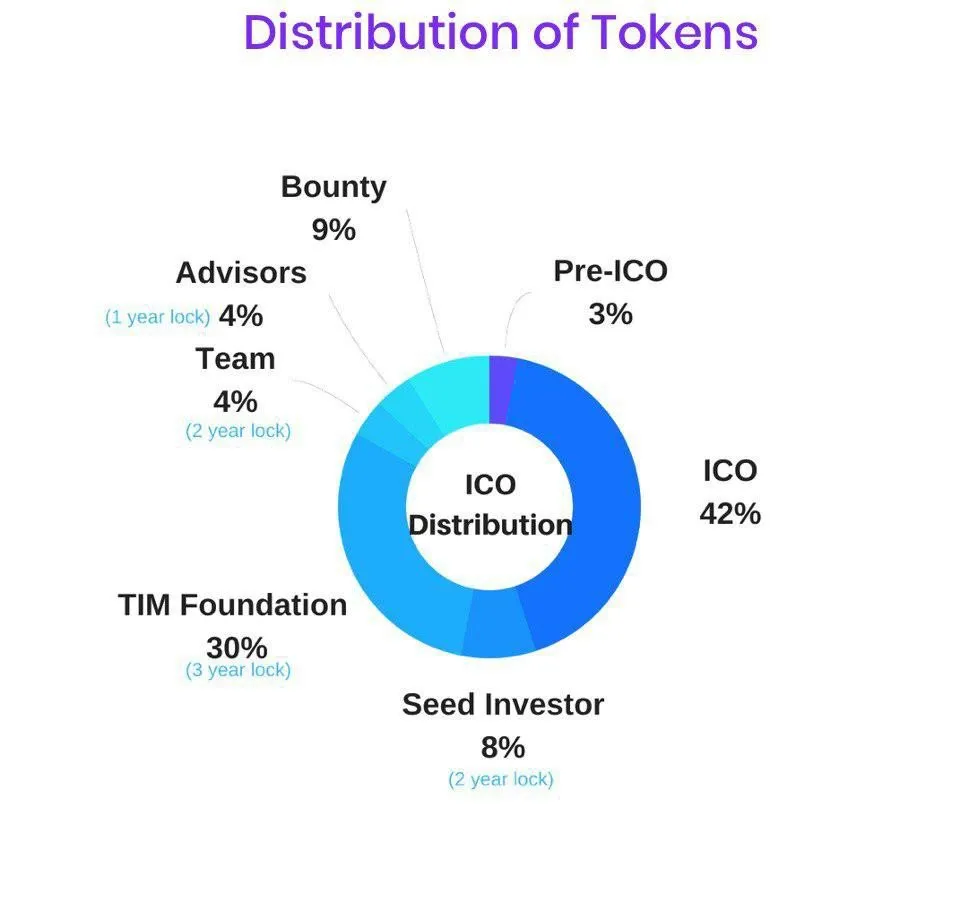
Token distribution for the ICO
Great token metrics plenty of upside for investor. 1 bil marketcap = 52x
Competition/Risk
There’s a plethora of blockchain 3.0 projects. This would square up with the like of quarkchain (2 layer blockchain), Fanthom (DAG), Zilliqa (sharding). Perhaps the greatest comparison would to hedera hashgraph who are rumored to be raising 2 billion for their project
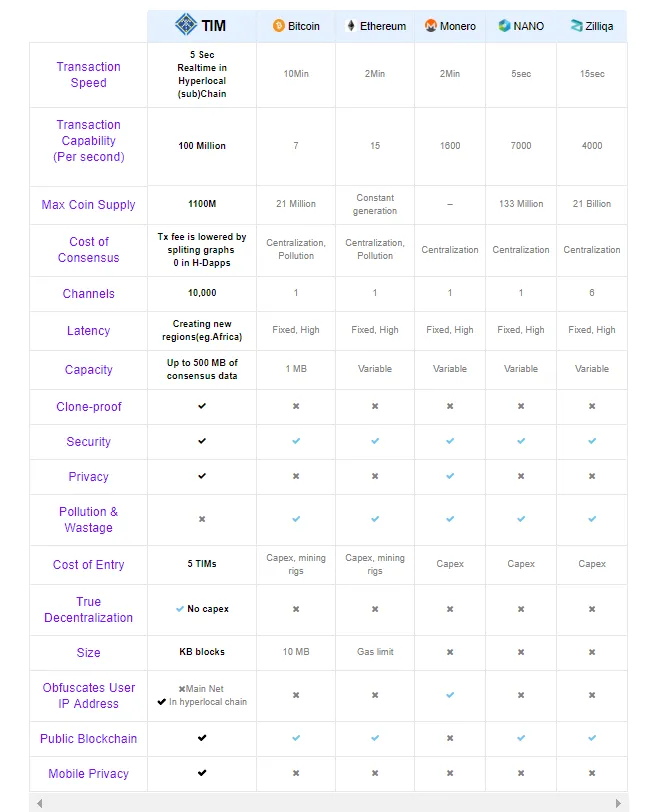
Real world application
Apart from being a blockchain for enterprises and businesses to use, as well as compete for developers to build on top of they are also :
1. Tim are creating a taxi sharing platform on top of their blockchain called TIM taxi (first dapp for TIM, cool concept to compete vs Uber)
1. Personal blockchain : TIM can host 2⁶⁰ sub chains which are protected by fee free challenger nodes. With same level of performance and security as TIMnetwork, sub chains can be your new email address or health record or roaming data storage like dropbox. There are a host of benefits where such a mailbox could be totally encrypted and free of any advertising or profiling your communications. It can be used for other services like one can pay for what you use for storage or bandwidth.
1. Tim has also created an ASIC chip ready to mine on their blockchain, there chip is quite small and be integrated into various IOT devices expanding the potential use case
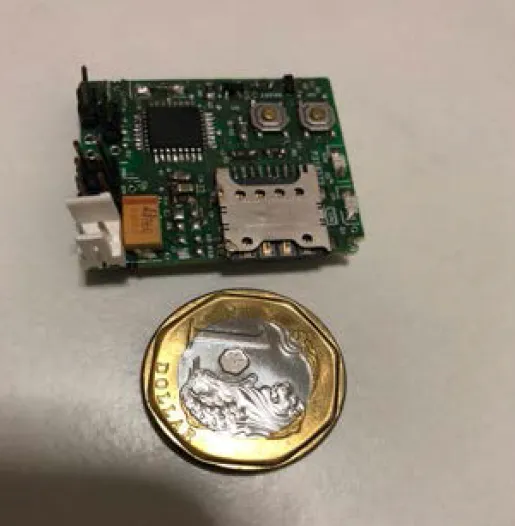
What does it take to mine?
Stake: 5 TIM for graphs, 100 TIM for blockchain consensus layer
Hardware: 8 GB Ram, 4 Core PC or Mobile
Power consumption: Up to 2KWH per day
FUD
Quite alot of bad FUD has been spread about their project, from my understanding they hired a marketing advisor which used a stock image and basically were taking them for a ride. When they found out they cancelled his contract and found more reputable business advisors.
They have a large supply of tokens, they never plan to sell all their tokens. They wish to raised 19 million only and burn the excess, so why do they have such a large supply? bonuses for strategic investors and other tiers vary and they had no idea how much would sell in which tranche(IMHO)
Conclusion
Blockchain projects have reach a saturation point and very few stands out above all the others, but with their novel scaling approach and outstanding team with a test net already running at 6000 tps I definitely feel this one is one of the more prepared ICO to date. Combined with a very reasonable hardcap and excellent token metrics once hype picks up and FUD is dispel you’re looking at a real gem in the rough
GRADE A ICO
none of this can be consider as financial advise, this isn't a recommendation just merely stating my opinion